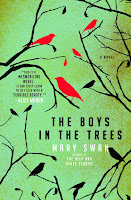 There are a few authors I turn to, in a sense, innately. Writers that I know so intently that I might mistake them for old family friends. People I’ve known all my life. Uncles that sit to my right at the holiday table and make intellectual conversation. J.M. Coetzee remains one such author, as does Peter Carey and Jack Kerouac (albeit the latter two are never related to me in my mind, for, ahem, complex and quite strange reasons of an overactive, um, “romantic,” imagination).
There are a few authors I turn to, in a sense, innately. Writers that I know so intently that I might mistake them for old family friends. People I’ve known all my life. Uncles that sit to my right at the holiday table and make intellectual conversation. J.M. Coetzee remains one such author, as does Peter Carey and Jack Kerouac (albeit the latter two are never related to me in my mind, for, ahem, complex and quite strange reasons of an overactive, um, “romantic,” imagination).
Annnywaaay, as I feel I’ll be alive for many, many years (wishful thinking and anti-disease positivity), I tend to stagger books by my favourite authors so I’ll don’t run out, so that I’ve always got something to read during weeks like this one, rare time that’s not jam-packed with everyday life, days I like to spend with people who put words together in the best possible ways.
I finished In the Heart of the Country a couple of days ago. It’s an older novel, first published in 1977, about a lonely spinster named Magda who lives in the heart of the South African veld on a farm with her aging father and a black sheep-herding servant named Hendrik. When Hendrik brings home a beautiful young woman to be his bride, the divisions of race and class rear up and bring to a head the psychological and even psychotic nature of poor Magda. The novel is written from her point of view. The short, diary-style entries waver back and forth between truth and fiction. Magda makes up as much of her life as exists in reality, driven to this madness by desire, by the lack of intensely human experience, and a strange, stilted relationship with a father from whom she desires inappropriate emotions.
When her father takes up with Hendrik’s wife, Magda’s life goes off the rails. A desperate and violent act pushes her further into insanity but it’s never clear what actually happened and what Magda makes up. The fanciful way of creating a life on paper that she could never lead in life. As with all of Coetzee’s novels, the writing is sparse, the violence unexpected and bloody, and the conflict coloured by the unique and systematic effects of colonialism. Of all the Coetzee books I’ve read in the last little while, I have to admit that this is the one that I enjoyed the most. In tone and texture, it’s a lot like Waiting for the Barbarians and a lot less like Elizabeth Costello, thankfully, as I still remember how frustrated I was when reading that book.
There were so many narrative aspects to the novel that intrigued me — how Coetzee has a talent for ensuring that the landscape matches and even mimics the vast, lonely nature of Magda’s own mind. But at the same time, nature mocks her — coupling all around makes the cold, dry experience of her her lack of sexuality utterly apparent. And when race and class fall apart, when the world turns itself on its head, she clings to her gender, to her reedy sexuality as a way of at least trying to stay a conscious member of the world, even if her society soon becomes a population of just one. For such a short book (my copy runs 149 pages), In the Heart of the Country demands attention and reflection. I’m glad I waited a couple of days to blog about it so I could set my thoughts somewhat straight. Magda’s the ultimate unreliable narrator and I have to say sometimes that I really enjoy novels with such protagonists.
READING CHALLENGES: This was one of the 1001 Books titles that was lost on my bookshelves and I didn’t even realize it was there. So it’s on my master list for 2009, and I guess this puts me a little ahead of my reading for next year. I can already cross off two of the titles from that massive list of 66 (review of Enduring Love coming up next!).
STRANGE ASIDES: After finishing up the abysmal The Almost Moon a few days ago about a slightly crazy woman who commits matricide, it’s funny that one of the next books I should pick up is about a seemingly nutty woman who commits unspeakable acts of violence against her father.
WHAT’S UP NEXT: More book lists and more closets to be cleaned out before I’ll really make this decision.






